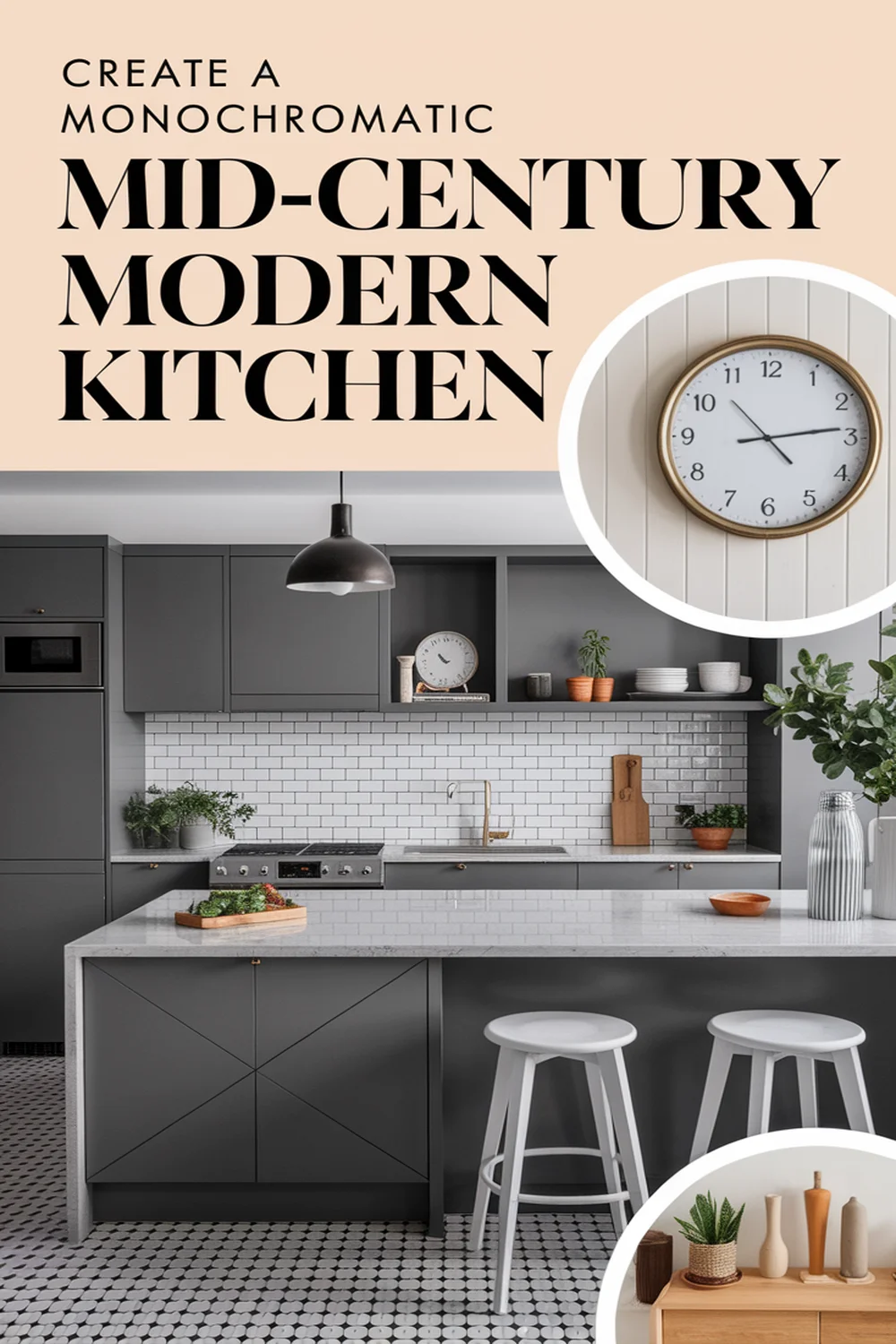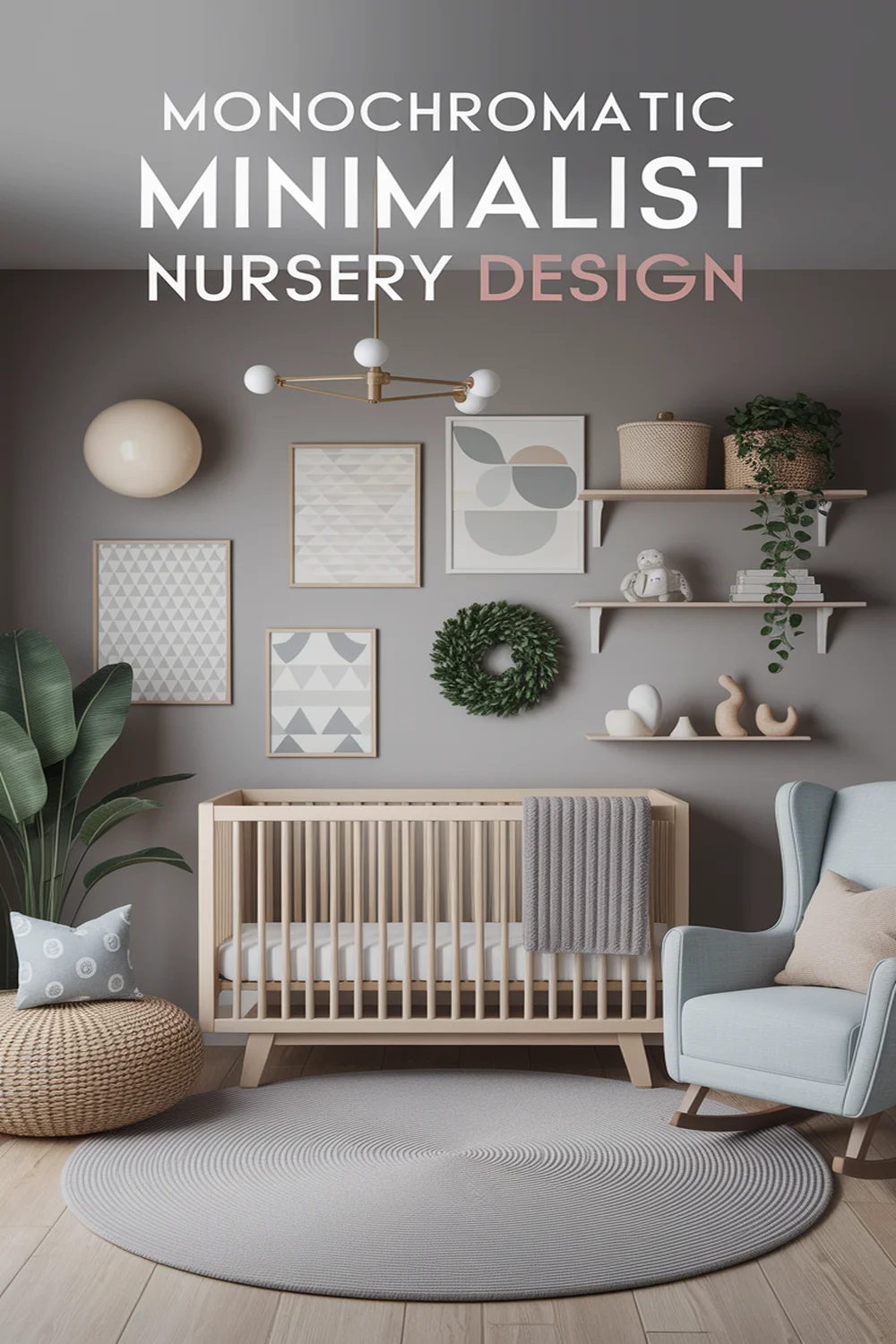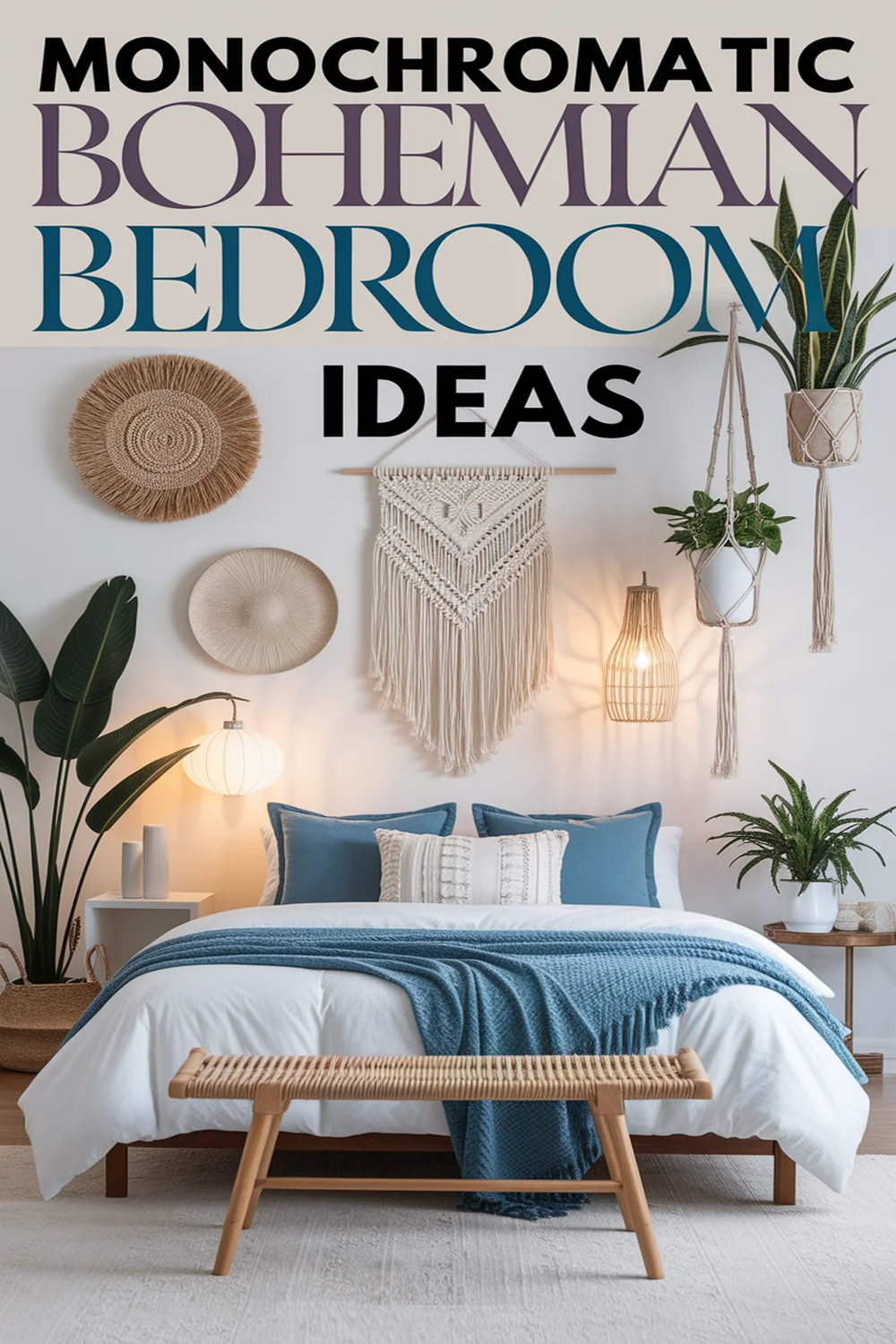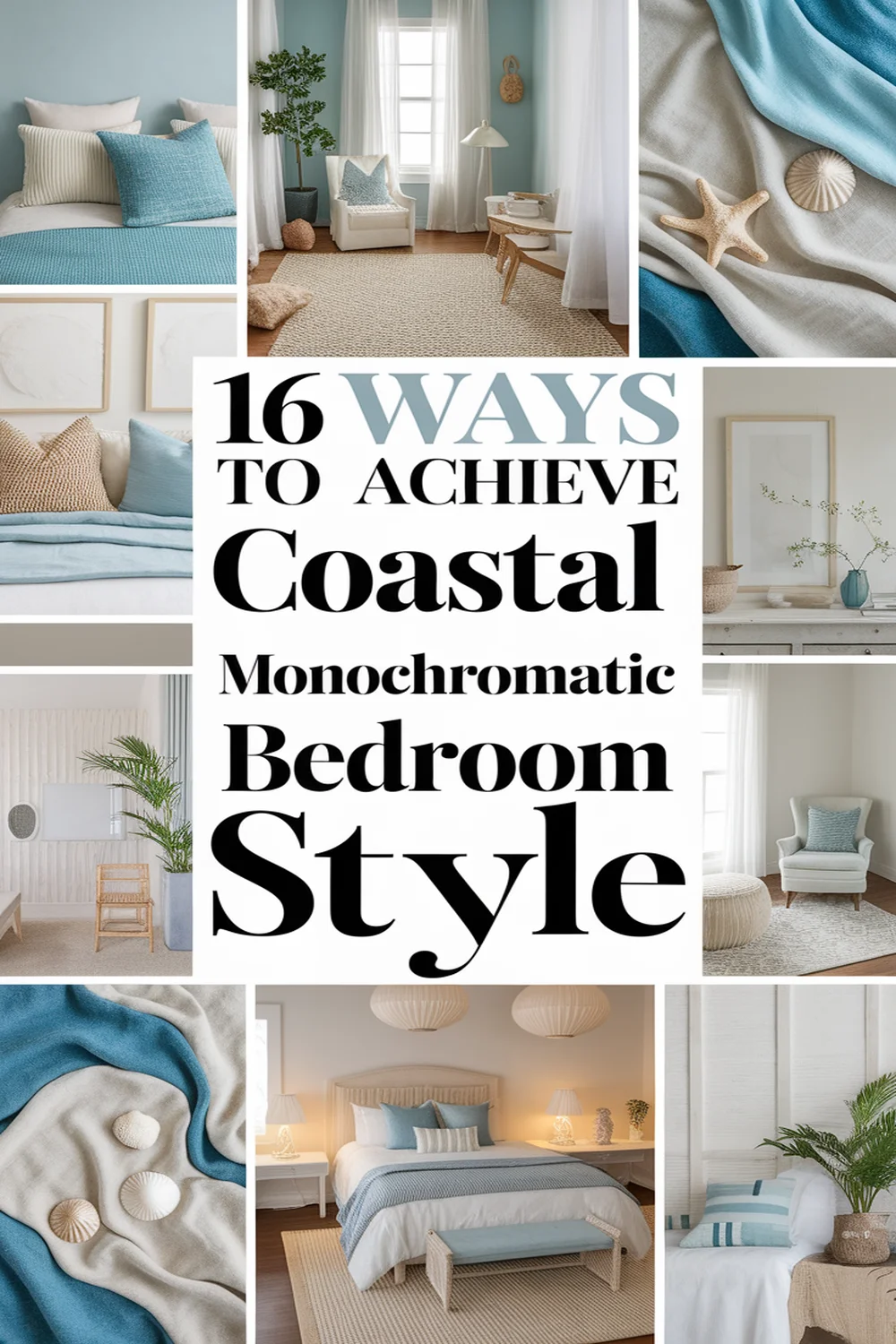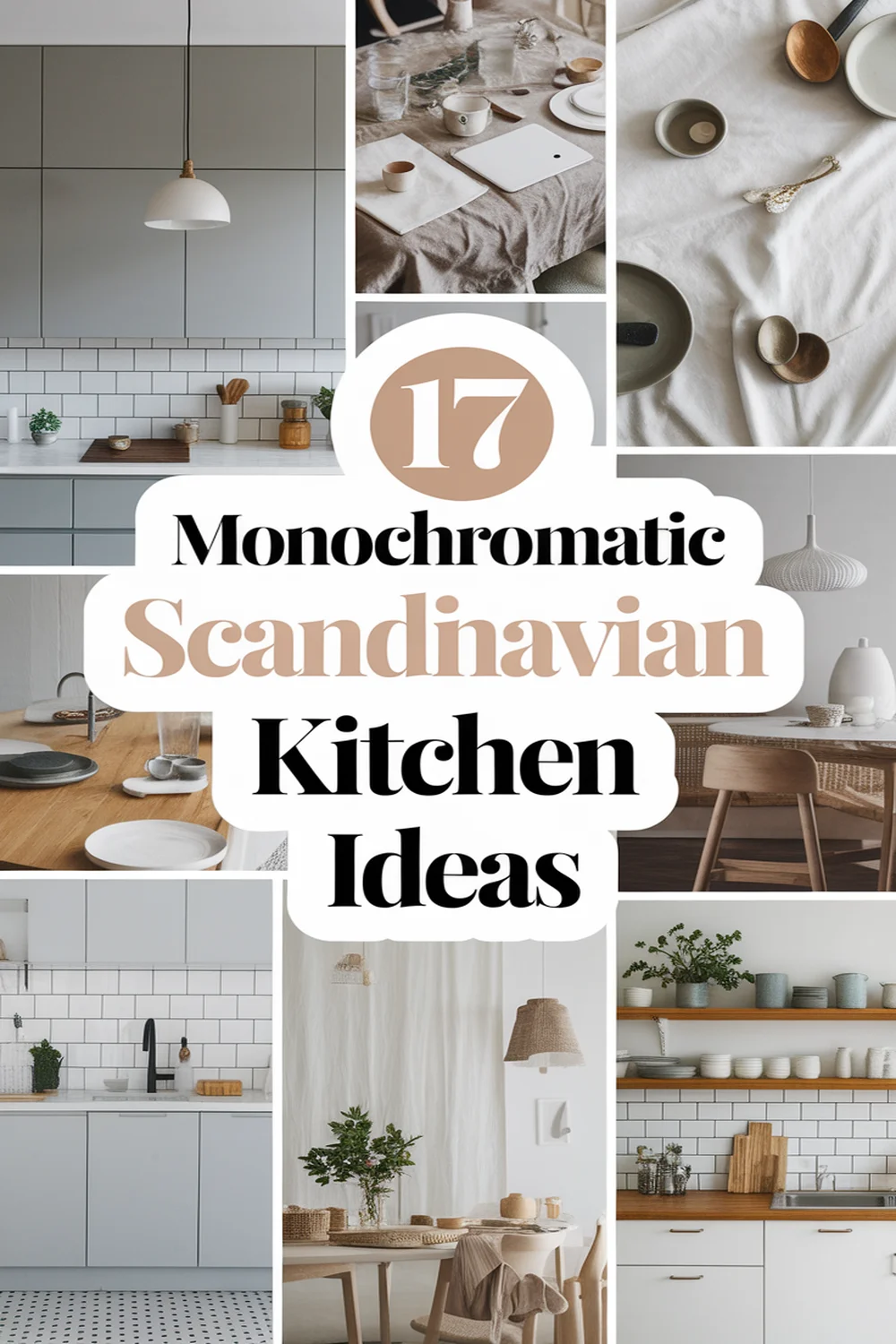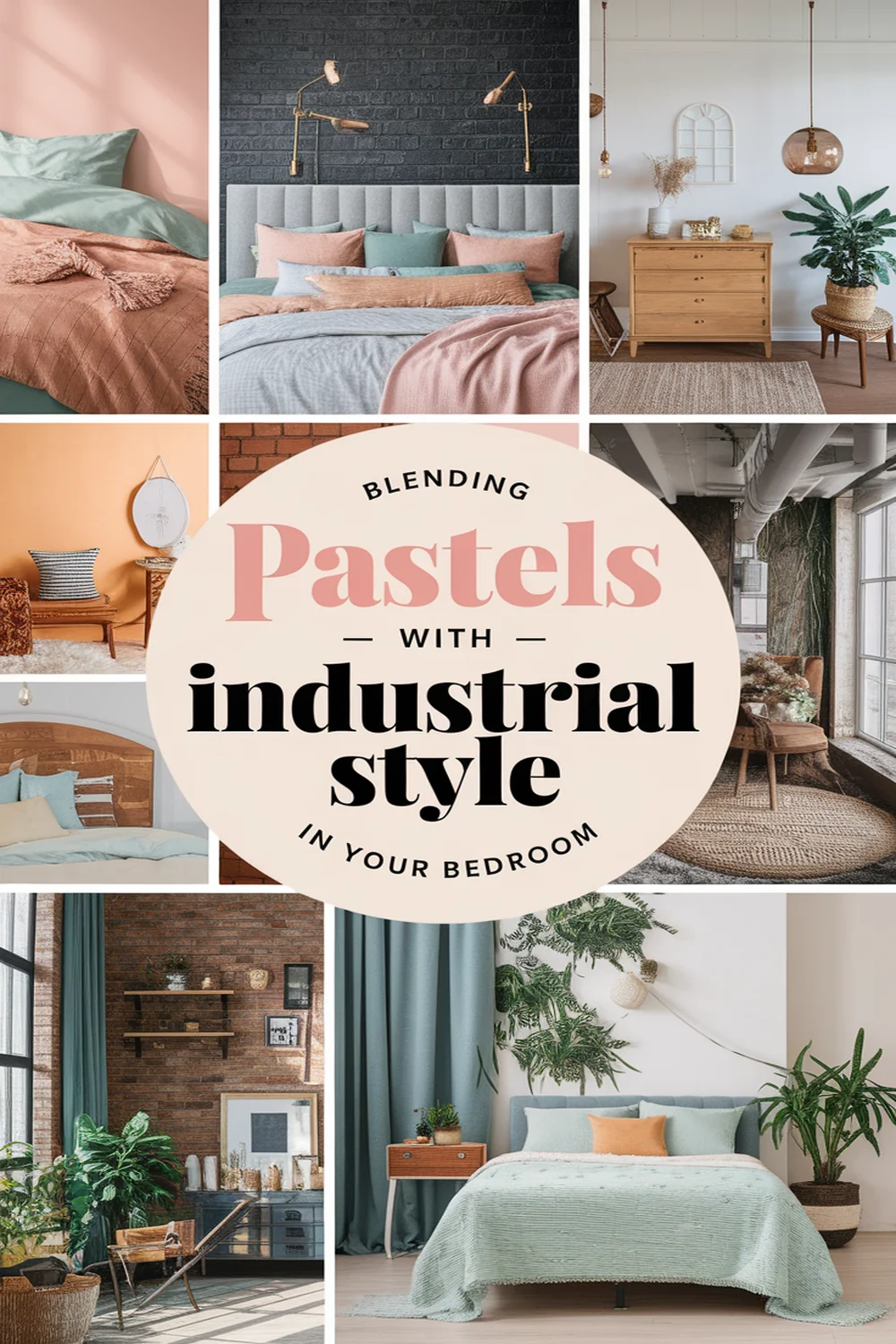This post may contain affiliate links. Please read our policy page.
To achieve a monochromatic kitchen in Mid-Century Modern style, I prioritize clean lines and organic forms while selecting a base color like soft gray or muted green. I play with shades and tints for dimension, incorporating natural woods and sleek metals for warmth and contrast. Iconic furniture pieces elevate the aesthetic, and layered lighting enhances mood and visibility. There’s so much more to explore on creating a stunning space that harmonizes design and functionality.
Understanding Mid-Century Modern Design Principles

As I explore the world of Mid-Century Modern design principles, I can’t help but appreciate how this style seamlessly blends form and function.
The emphasis on clean lines and organic shapes captivates me, creating a harmonious balance between aesthetics and usability. Each piece seems thoughtfully crafted, as if it were designed to enhance everyday living.
The allure of clean lines and organic shapes creates a perfect harmony of beauty and practicality in design.
I notice how materials like wood, metal, and glass intertwine, showcasing a commitment to authenticity. The open spaces invite light, fostering a sense of airiness, while bold geometric patterns add a playful touch.
Functionality reigns supreme, with furniture designed for comfort without sacrificing style. This design philosophy encourages a connection between the individual and the environment, making it timeless and relevant even today.
Choosing the Right Monochromatic Color Palette
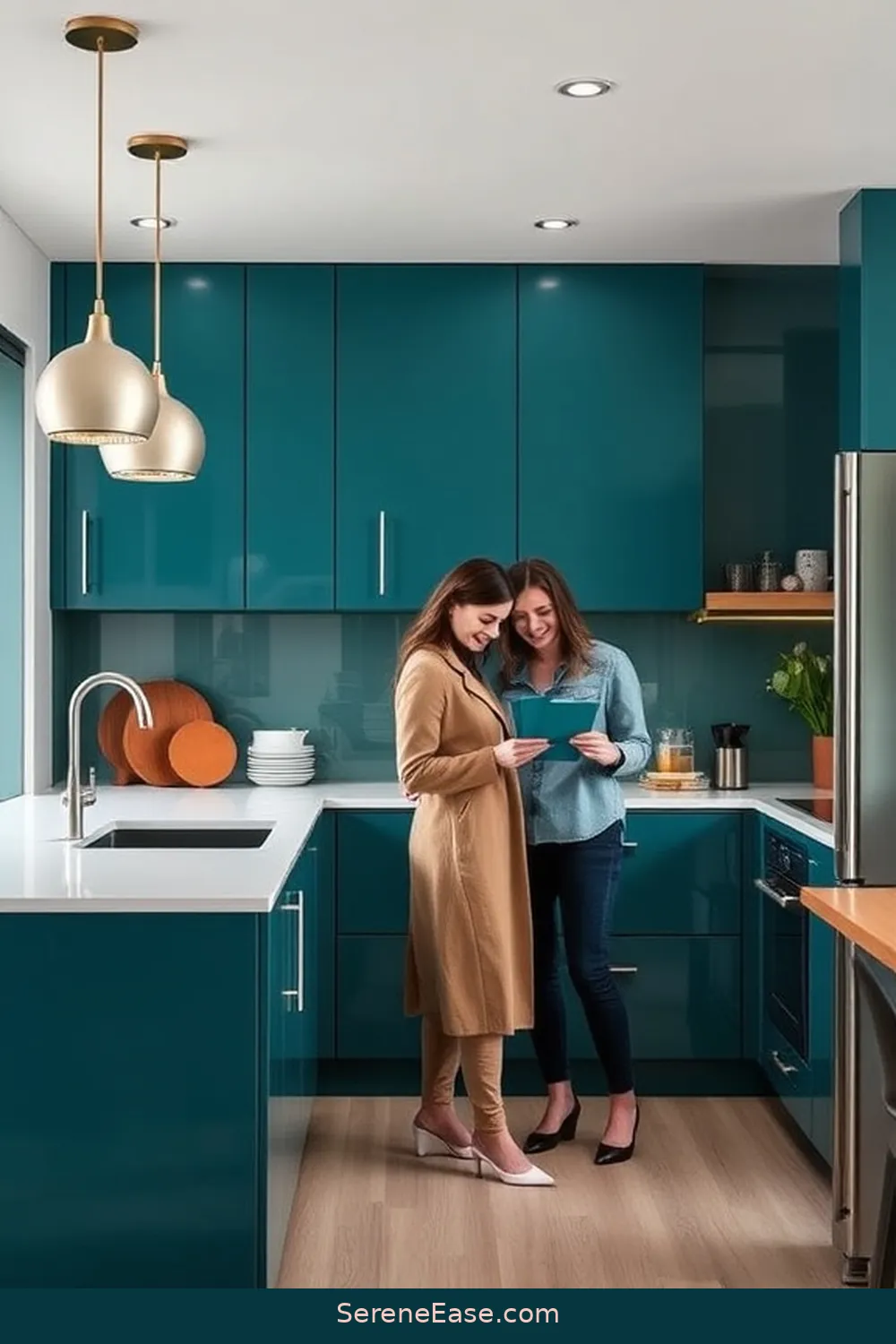
How do I choose the right monochromatic color palette for my Mid-Century Modern kitchen? It’s essential to find a balance that reflects both elegance and simplicity. Here’s how I approach it:
- Identify the Base Color: I start with a primary color that resonates with me—perhaps a soft gray or a muted green. This will anchor the entire space.
- Explore Shades and Tints: Next, I experiment with lighter and darker variations of that base color. This creates depth and dimension without overwhelming the eye.
- Incorporate Accents: Finally, I add subtle accents, such as metallics or darker hues, to enhance visual interest. These elements complement the monochromatic scheme while maintaining that essential Mid-Century Modern vibe.
Recommended Items
Discover our curated selection of products and equipment to help you create a stunning monochromatic kitchen in mid-century modern style!
Products
Selecting Materials for a Timeless Look

While selecting materials for a Mid-Century Modern kitchen, I focus on those that not only embody timeless elegance but also resonate with the aesthetic principles of the era.
Selecting materials for a Mid-Century Modern kitchen requires a balance of timeless elegance and the era’s distinctive aesthetic principles.
I lean towards natural woods like walnut or teak, as their rich grains add warmth and depth. Pairing these with sleek, polished metals creates a stunning contrast that feels both modern and classic.
For countertops, I often choose white or grey quartz to maintain a clean, monochromatic look while ensuring durability.
I also love incorporating glass elements, like cabinet doors, to enhance openness and light.
Each material I select serves to create a cohesive space that reflects the simplicity and functionality characteristic of Mid-Century design, allowing the kitchen to feel both inviting and stylish.
Task Breakdown for a Monochromatic Kitchen
Incorporating Iconic Mid-Century Furniture and Fixtures

Choosing the right materials sets the stage for a Mid-Century Modern kitchen, but incorporating iconic furniture and fixtures truly brings the space to life.
I love how these elements add character and charm, creating a cohesive look. Here are three must-have pieces to take into account:
- Eames Dining Chairs: Their sleek lines and vibrant colors pop against a monochromatic backdrop, offering both comfort and style.
- Tulip Table: This sculptural piece serves as a stunning focal point, effortlessly blending form and function in your kitchen.
- Saarinen Bar Stools: Ideal for a breakfast nook, these stools bring an organic flair, inviting guests to gather and enjoy.
These iconic items not only enhance aesthetics but also evoke a sense of nostalgia, enriching your kitchen experience.
Creating Functional Yet Stylish Layouts
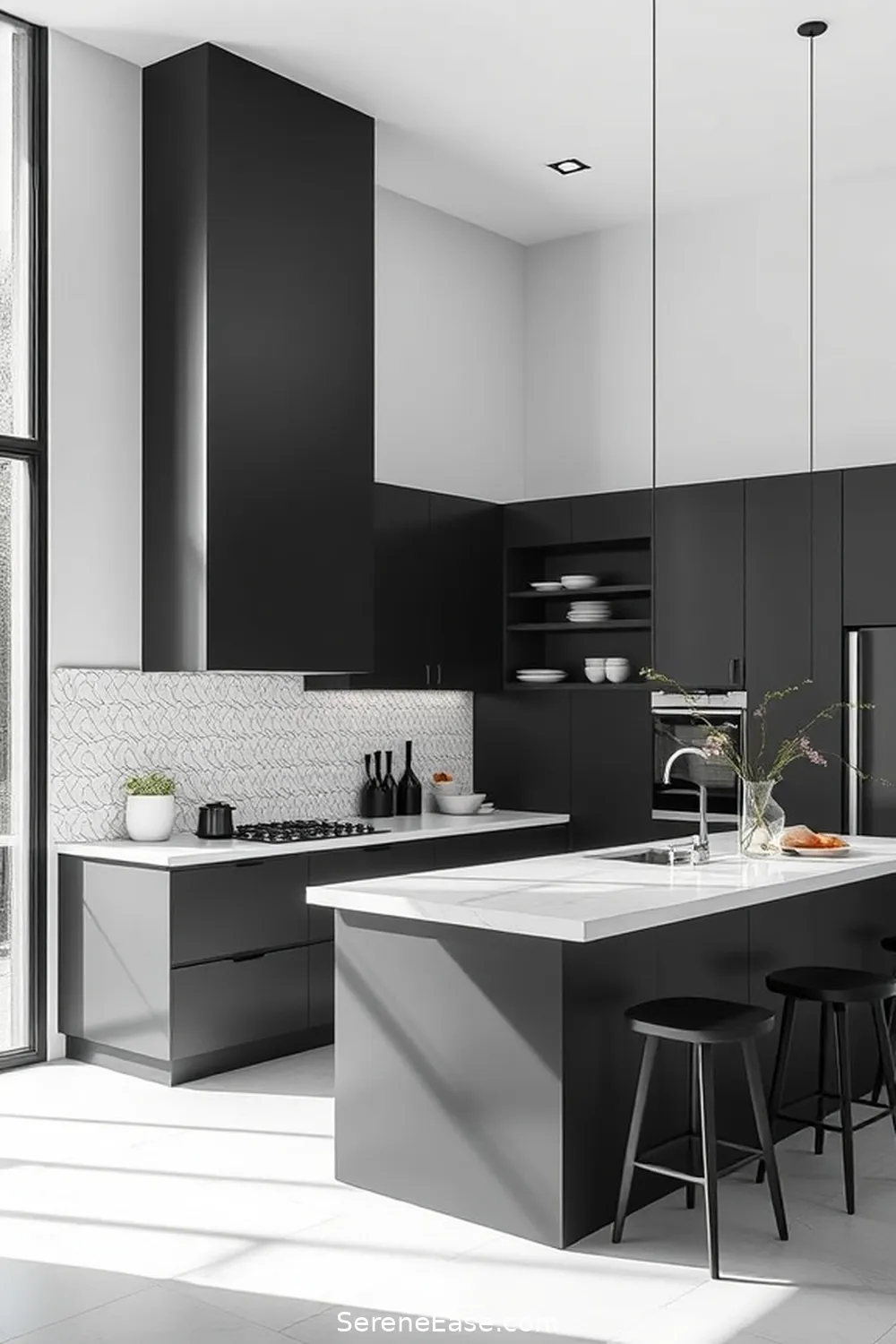
When designing a Mid-Century Modern kitchen, I find that balancing functionality with style is essential for creating a space that’s both practical and inviting. I focus on efficient layouts that promote workflow while embracing the era’s aesthetic. The key is to prioritize essential zones, ensuring your kitchen’s design remains sleek yet efficient.
| Zone | Functionality | Style Element |
|---|---|---|
| Cooking Area | Stove and prep space | Clean lines, muted colors |
| Storage | Cabinets and pantry | Minimalist hardware |
| Dining | Eating space | Iconic furniture pieces |
| Workflow | Triangle layout | Open, airy feel |
| Lighting | Task and ambient lighting | Retro fixtures |
Adding Decorative Elements and Accessories

To truly capture the essence of a Mid-Century Modern kitchen, I believe it’s vital to thoughtfully incorporate decorative elements and accessories that reflect the style’s unique character.
Thoughtfully incorporating decorative elements is essential to embody the unique character of a Mid-Century Modern kitchen.
The right pieces can elevate your space and create visual interest. Here are three essential items I recommend:
- Vintage Tableware: Look for colorful ceramics or streamlined glassware that echo the era’s playful aesthetics.
- Graphic Art: A bold, abstract print or a retro-inspired poster can serve as a stunning focal point, adding personality to your walls.
- Sculptural Accents: Consider incorporating mid-century-inspired sculptures or vases that bring texture and form to your countertops.
Lighting Solutions to Enhance Your Monochromatic Kitchen

As I explore the world of lighting solutions for a monochromatic kitchen, it becomes clear that the right fixtures can dramatically transform the ambiance and functionality of the space.
I love the idea of sleek pendant lights, suspended gracefully above a central island, casting focused light while adding a touch of elegance. Wall-mounted sconces can create soft, diffused lighting, perfect for highlighting the kitchen’s clean lines and minimalist aesthetic.
I often opt for LED strip lights under cabinets; they not only enhance visibility but also provide a modern glow that accentuates the monochromatic palette.
Finally, incorporating dimmers allows for mood adjustments, ensuring the kitchen is equally inviting for intimate gatherings or bustling meal preparations.

